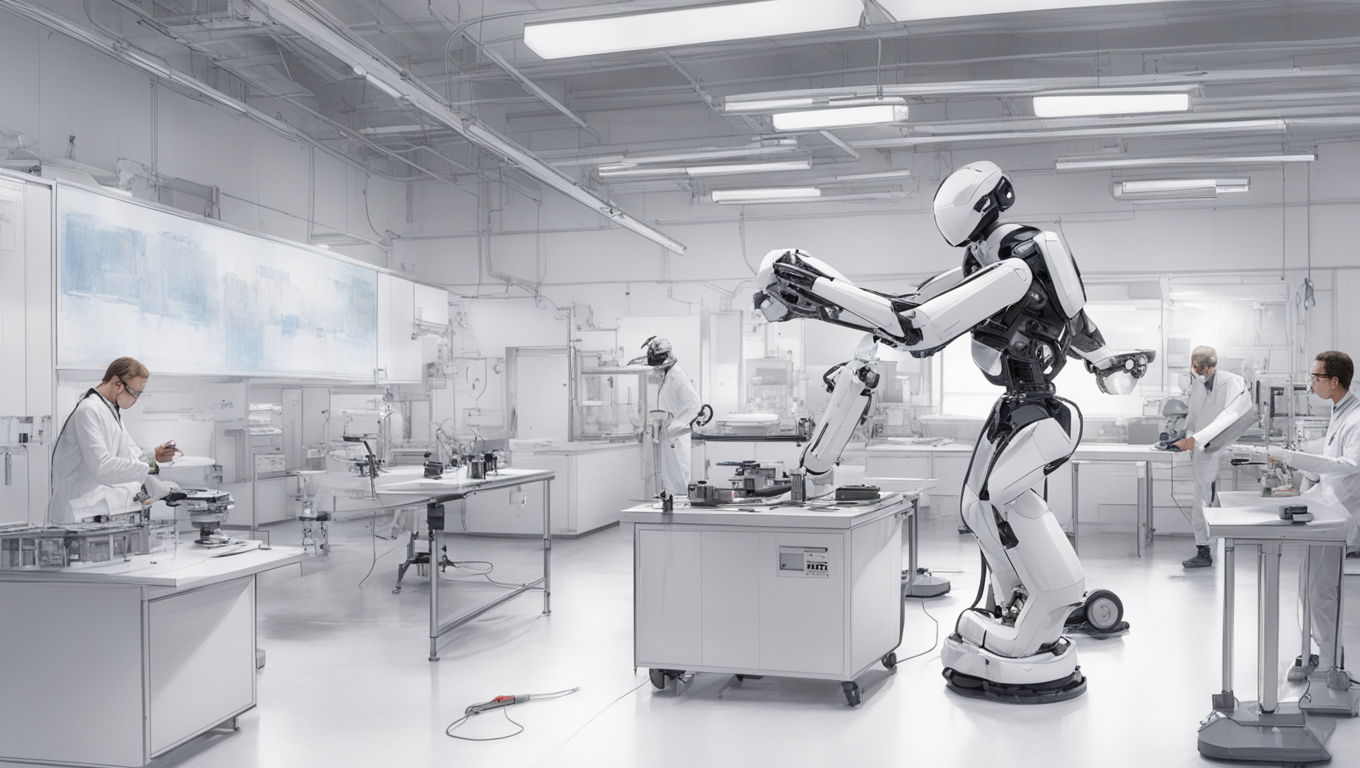In the bustling city of Los Altos, California, the Toyota Research Institute houses a mock grocery store. Inside, a humanoid robot is faced with a series of challenges. It must navigate the aisles, locate items on its shopping list, determine the weight and packaging of products, and decide on the best method for retrieving them. Should it use the pincers on its right arm or the suction tube on its left hand? These everyday tasks may seem simple to us as humans, but for robots, they require a complex set of technologies to be mastered.
Max Bajracharya, the senior vice president of robotics at the institute, acknowledges the fervor surrounding the robotics industry. Boston Consulting Group predicts that the market sales for robotics will soar from $40 billion to $160 billion to $260 billion by 2030. However, Bajracharya reflects on the past excitement around another tech phenomenon: robotaxis. A decade ago, experts predicted a future filled with autonomous taxis, but the technology simply wasn’t advanced enough at the time. Bajracharya cautions against making the same mistake with robots, emphasizing the need for foundational technologies that make them truly useful and reliable in real-world scenarios.
While the Toyota Research Institute may not be developing a grocery shopping robot itself, its primary goal is to push the boundaries of technology in various fields, including robotics. The institute, established as the research arm of the automaker, focuses on five key areas: energy and materials, human-centered artificial intelligence, machine learning, human-interactive driving, and robotics. One recent breakthrough involves generative artificial intelligence, where engineering parameters are incorporated into the car design process. This approach shortens design cycles and allows for more efficient innovation.
Furthermore, the institute recently unveiled a “breakthrough” generative AI approach that enables robots to learn over 60 skills without any coding. This advancement opens the door to a multitude of possibilities, from pouring liquids to using tools, and will enable the robots to acquire hundreds of skills by the end of the year. The Toyota Research Institute seeks to make robots more adaptable and versatile in a wide range of environments.
“If we’ve done our job right, these skills can apply to many different applications,” explains Bajracharya.
The Toyota Research Institute’s commitment to exploring the potential of robotics goes beyond developing a single product. It aims to lay the groundwork for technologies that will shape the future of automation. The institute’s focus on foundational technologies ensures that robots can tackle a broad spectrum of tasks, making them truly valuable and reliable in the real world.
As the robotics industry continues to grow, the Toyota Research Institute remains at the forefront of innovation, constantly pushing the boundaries of what robots can achieve. While the future may hold many challenges and uncertainties, the institute’s dedication to advancing technology brings us one step closer to a world where robots and humans can effectively collaborate. With the right foundational technologies in place, the possibilities are truly limitless.





Use the share button below if you liked it.